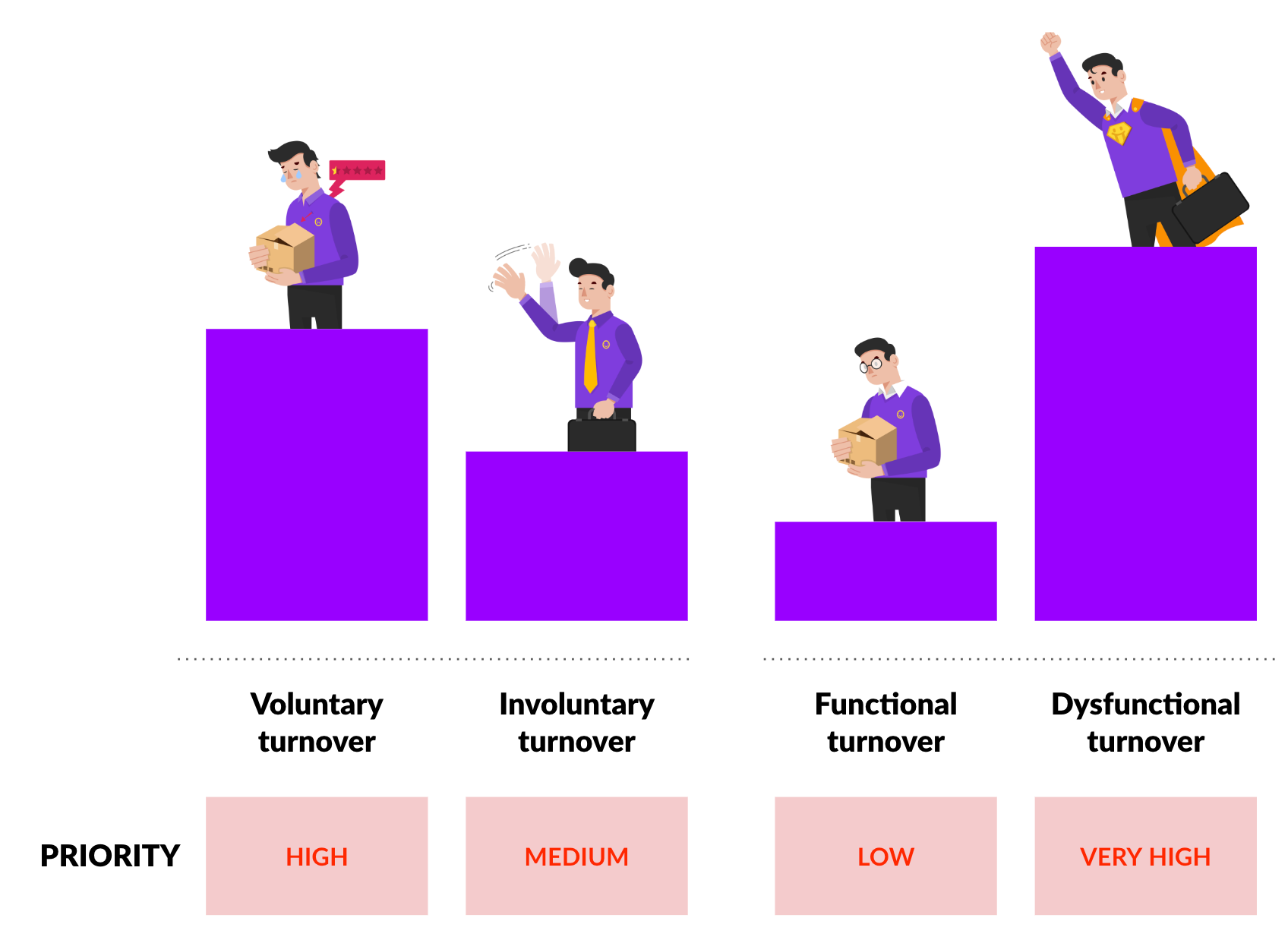Employee Retention has quickly translated into one of the key metrics organizations need to keep track of in 2022. Retaining the best talent is essential in promoting organizational growth. Any time an employee leaves a role, there is time, money, and effort associated with recruiting, hiring, and training a replacement. It is too expensive and time-consuming to recruit and retain new employees, as well as to continue training them further. According to the Society for Human Resource Management, employee turnover costs U.S. businesses about $4,000 per employee annually. That number jumps to $10,000 for small businesses with fewer than 100 employees. Furthermore, high employee turnover also hurts employee performance and happiness. This brings us to the question, what is Employee Retention and why is it so important?
In this article, we will answer:
- What is Employee Retention?
- Why is Employee Retention important?
- Is Employee Retention HR's biggest issue in 2022?
What is Employee Retention?
Employee retention is the organizational objective of maintaining skilled people and lowering employee turnover by building a great work environment to boost employee engagement, showing employee appreciation, offering competitive compensation and benefits, and encouraging a healthy work-life balance.

Organizations foster retention by implementing strategies to reduce turnover. Individuals leave jobs for different reasons. Some are voluntary, such as getting a better job elsewhere. Some are involuntary, such as getting laid off. Employee Retention refers to strategies developed to reduce voluntary turnover. This is crucial for organizations because, to thrive, they need to keep their best employees and add to them.
With WFH enforced, an FMCG using Happily quickly noticed that employees were stressed, overwhelmed, and over-challenged. The leadership team faced challenges of a disengaged workforce and increasing turnover year on year.
With Happily, they were able to foster a continuous feedback loop between employees and their direct managers, helping build and maintain strong working relationships. Happily's Daily Check-ins also provided managers a way to understand the team's wellbeing and happiness, as well as identify people who are struggling.
Result: Company happiness increased by 43% after 12 months. Voluntary turnover was reduced by 4.1%, resulting in massive cost savings.
Why is Employee Retention important?
Employee Retention has become a critical element for most HR departments and high-level executives, especially following the great resignation. The great resignation is a phenomenon that describes the "record numbers of people leaving their jobs during the COVID-19 Pandemic". This means that companies have to navigate the ripple effects of the pandemic and re-evaluate how to retain talent. Employee Retention is important to organizations for the following reasons:
1) Cost Reduction (or Savings)
As aforementioned, retaining employees helps organizations reduce their costs drastically. Costs that they would otherwise incur if there was a turnover.
A high employee retention rate in an organization = Low Employee Turnover = High-cost savings
A low employee retention rate in an organization = High Employee Turnover = High turnover expenses
Turnover is costly. Try our employee turnover cost calculator to see how much turnover is costing your company. A report from SHRM (Society of Human Resource Management) claims that total replacement costs for each employee can range from 90% of a worker’s salary for an entry-level employee to 200% or more for tenured professionals and leaders.
2) Increased Employee Morale and Happiness
When valued employees leave, either voluntary or involuntarily, it negatively affects the morale of their team members and friends in the organization. Aside from losing a connection, employees who remain may also have to take on heavier workloads or responsibilities. This could also have a knock-on effect on their motivation and overall employee well-being.
Having good employee retention strategies prevents this from happening. Organizations with high and successful retention strategies can lift employees' morale, satisfaction, and well-being. When morale is high, the workplace fosters a positive environment, in turn increasing happiness and motivation to work.
3) Improved Company Culture
Company culture is the fuel that drives engagement, performance, and well-being in most workplaces. Having a strong employee retention strategy in place allows workers to feel connected, creating a positive work culture. Recognition plays a crucial role in building a productive workforce, as employees like to feel recognized for their achievements. This is evident as 68% of SHRM's survey respondents agree that their organization's recognition program affects their retention.

Is Employee Retention HR's biggest issue in 2022?
As the department in charge of recruitment, HR managers have to ensure turnover is kept at a minimum so employee performance and well-being are unaffected. Organizations ought to try their best to retain their best talents to reach organizational goals and objectives. This means taking a more human-centric approach that is meant to center on what works for employees rather than just the company, including looking at compensation packages, flexible work arrangements, wellness initiatives, and so on. Moreover, management might also want to invest in an employee engagement software like Happily as part of their retention strategy to monitor and improve employee well-being, foster a feedback loop, give and receive recognition, and receive valuable employee insights from the Happily's analytics. This leads us to -
Why is Employee Retention such a challenge for HR and CEOs in 2022? Here are some factors:
- The Great Resignation isn't over - A Gartner report forecasts that annual employee turnover in 2022 will exceed pre-pandemic levels by 20%.
- Ineffective recognition and feedback systems - Employees need to feel valued for their work. As aforementioned, 68% of employees feel that their organization's recognition program directly affects their retention. Moreover, creating a feedback culture is also crucial to make employees feel appreciated - a lack thereof may cause employees to feel left out or confused, seeking validation. This also includes feedback in the form of exit surveys - employers ought to be aware of what is causing turnover in the organization.
- Poor Employee Onboarding - Employee orientation and onboarding are key in making new hires feel welcomed. A well-planned and organized onboarding program has been shown to increase employee retention, engagement, and commitment to the company. It should set clear expectations for employees' work and future at the company, connect them to their respective teams and colleagues, and provide opportunities for new hires to give and receive feedback.
Conclusion
Attracting and Retaining top talent in today's competitive landscape is a difficult job, both for HR departments and CEOs. The benefits of retaining talent cannot be overstated in creating a positive work culture where employees thrive and reach organizational goals. Management can do a better job in retaining employees by monitoring employee engagement at the workplace through an employee engagement software like Happily.
Happily.ai is an all-in-one employee engagement and experience platform that fosters a positive workplace. Organizations use Happily to run daily check-ins, enable better conversations, provide feedback, and receive recognition. Real-time well-being and happiness insights are also available to help you better understand your teams and people, including who has the lowest happiness rate or who has the highest risk of leaving. Learn more about how Happily can help you retain your best employees here.









